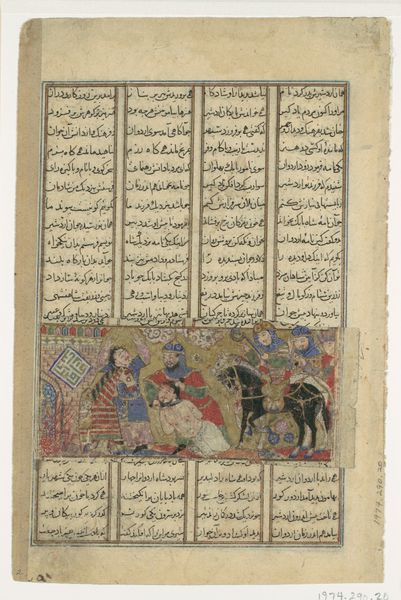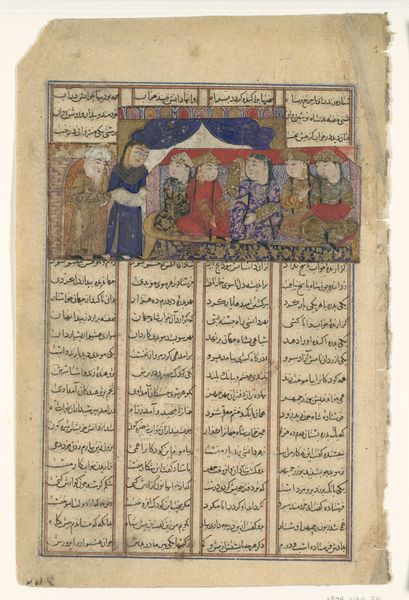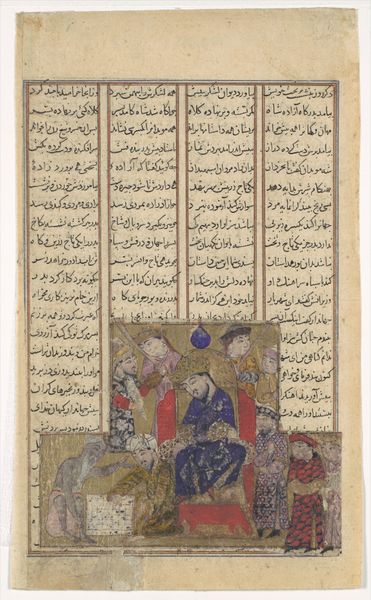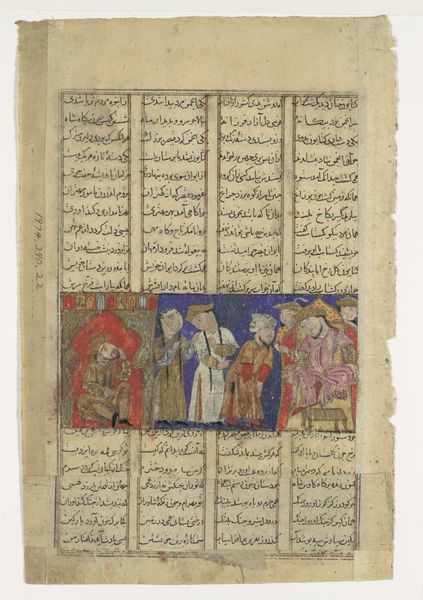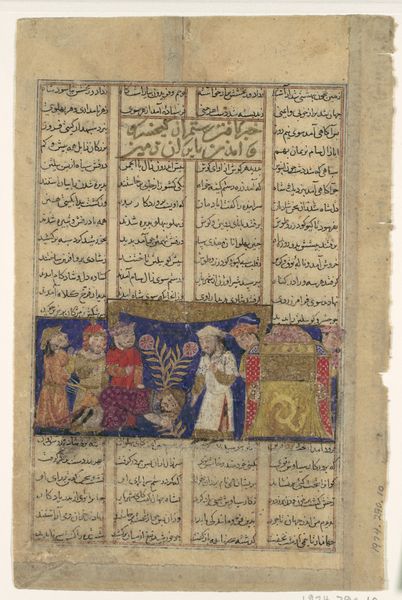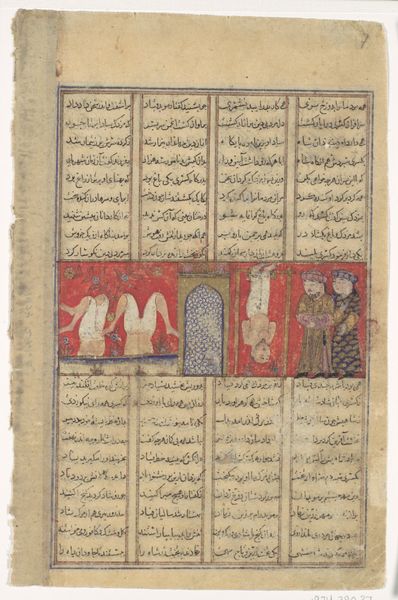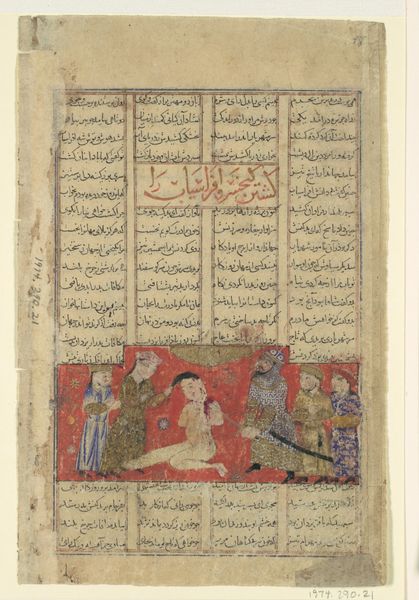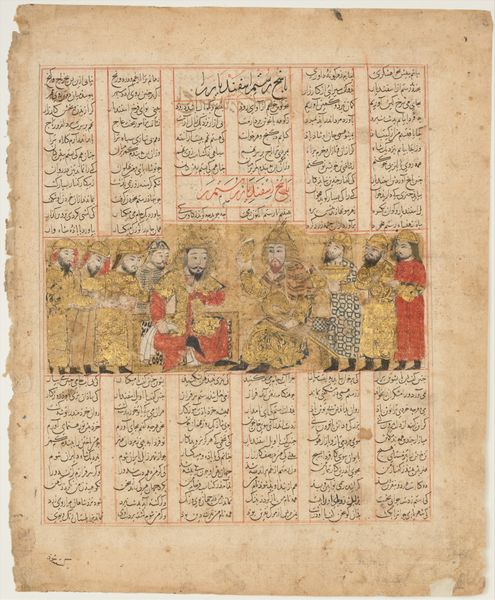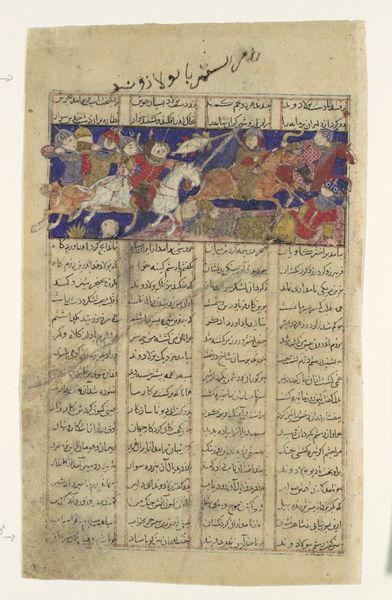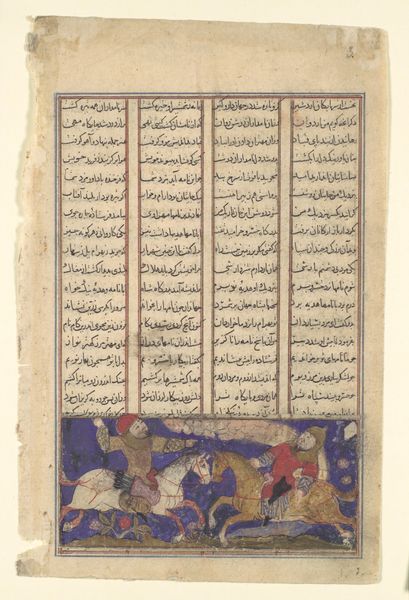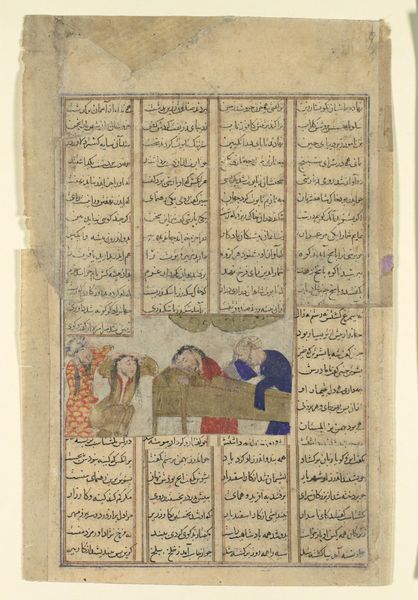
"Bahram Chubina Meets a Lady who Foretells his Fate", Folio from a Shahnama (Book of Kings) 1305 - 1365
0:00
0:00
painting, paper, watercolor
#
water colours
#
narrative-art
#
painting
#
paper
#
watercolor
#
coloured pencil
#
islamic-art
#
miniature
Dimensions: Page: H. 8 in. (20.3 cm) W. 5 1/4 in. (13.4 cm) Painting: H. 1 7/8 in. (4.8 cm) W. 4 5/16 in. (10.9 cm)
Copyright: Public Domain
Curator: "Bahram Chubina Meets a Lady Who Foretells his Fate", a folio from a Shahnama, created sometime between 1305 and 1365, and utilizes water colors on paper. It seems to blend formality with a sense of mythical storytelling. How do you interpret the interplay between these elements? Editor: It's a fascinating contrast! The figures are quite rigid and linear in their poses, almost like paper cutouts. However, the narrative scene, the text surrounding it, gives me the sense that something profound and ephemeral is being captured. Curator: Indeed. Notice the two distinct planes of artistic intention: the figural, the formal presentation and the linguistic, what appears almost as an afterthought? It has to do with a larger semiotic interplay; can you sense an opposition at work? Editor: I do... it's in the symmetry of figures, yet with an absence of realism. There's a flattening of depth that makes me wonder if perspective wasn't as important as conveying meaning through arrangement and symbolism. Curator: Precisely. Consider also the deliberate use of colour. The palette is limited but each shade—the blues, reds, and golds— carries considerable weight. It establishes a hierarchy. What might these symbolic markers be suggesting? Editor: Perhaps wealth, royalty... the weight of destiny. I can almost sense the impending doom the woman is telling Bahram. It brings together art and literature in a uniquely striking form. Curator: You have keyed into this well. This union underscores the integral role such folios played in visually interpreting and perpetuating stories, making accessible complex narratives that are meant to stir philosophical rumination. Editor: I now understand better how to appreciate the complex artistic devices in such manuscripts that made them more than just stories.
Comments
No comments
Be the first to comment and join the conversation on the ultimate creative platform.
